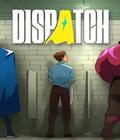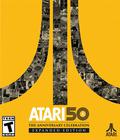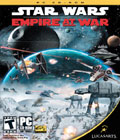Star Wars: Empire at War has been touted as "the most anticipated game of the year," and while other titles may use that slogan later on, EAW certainly looks good and is a title that Star Wars fans should check out. Set in the timeframe between Episodes III and IV, Empire at War plays a lot like Battlefront 2 made as a real-time strategy because that's what it is. You can play as either the Empire or the Rebellion, and you can select from three different game modes: skirmish, storyline-campaign, and galactic conquest.
Skirmish mode can be played either on land or in space. While on land, players start with bases, preparing and earning credits with each turn. You do all of your building and credit collection here. You have a maximum of three fleets; only one of these is deployable at any given time. Once you decide how many units you want to attack with, you can send them to any planet to which you have a direct line of sight. If the planet is undefended, a planetary battle ensues.
Inferior units are first into the fray, their goal is to capture "reinforcement points" that allow you to deploy your advanced units. This is a critical phase of the game, as failure to deploy your heavier troops in time will result in the enemy getting the drop with turbo-lasers and a probable decimation of your weaker scouting forces.
Once you get turned away from planetary battle, you are sent back to space. The AI opponent may attempt to cut you off, in which case a space battle ensues. You start with some small ships to scout around, but the actual fighting is left to the capitol ships. These include Star Destroyers, Avenger class cruisers, MonCalamari frigates, and Corellian Corvettes, and many other classic Star Wars universe ship designs.
Space combat is fairly straightforward – click and drag your craft, right-click on enemy ships to attack, and then hurry up and wait. To help pass the time, you can order your fighters to target hard points on the enemy capitol ships, which can remove their weapons or destroy their command bridges. This can send them into disarray, and turn the tide of battle. Overall, ship combat is fun and is a definite highlight of EAW.
In campaign mode, you must complete mission objectives in a given sequence. You begin with a 2-D galactic overview map, which displays a few dozen planets, and you move your army forward, planet by planet, as prompted. You can learn about an enemy's defensive capability by sending a smuggler to their planet's surface to gather intel, or by just attacking it and finding out the hard (fun?) way. Once you move your troops onto an enemy's planet, you jump into 3-D to begin the attack. You can also let the situation auto-resolve, if you're so inclined. To consider a planet fully part of your domain, you need to defeat all enemy forces in space as well on the surface of their world.
Galactic conquest is basically a variant of the campaign mode, except with predetermined scenarios. Each of the eight available maps has certain mission goals (such as conquering specific planets, destroying the Death Star, or removing the Rebellion from the galaxy) which must be achieved in order for you to be victorious. The number of planets for each map ranges from eight to 43, and the default tech level and starting credits are filled in for you. However, you can adjust the starting credits and minimum/maximum tech levels, if you so choose.
The AI is quite impressive, with some beautifully insidious tricks that it can and will play. The enemy builds according to what is most strategically sound for the given battle, and defensive units are placed to achieve maximum tactical effectiveness. As an example, I launched an attack on a planet, dropped my reinforcements, and began the assault. Everything was going perfectly according to plan, until I was met with towers up on a ridge forming a defensive wall, and a healthy artillery battery placed far to the back, well out of range of my advance troops. This seems like a fairly basic setup, but considering how rare it is that AI scripting even covers basics like this, I was impressed. Better yet, the developers even managed to squeeze adaptation into the mix; if you build turbo-lasers, the enemy will react and build supertanks to wipe out your lasers, and vice versa. This is somewhat similar to Dawn of War on "insane AI" mode, only not quite as terrifying.
Skirmish and galactic conquest modes have multiplayer portions which can be played online or over a LAN. The former allows up to eight players, whereas the latter only requires two. Multiplayer mode was fun, but in over 30 rounds of play, the abundance of players using MapHack certainly put a damper on the whole affair.
After all is said and done, Star Wars: Empire at War is a decent addition to the venerable Star Wars universe. The $50 price tag might seem somewhat high for a game that takes one idea, tweaks it a bit, and calls it a whole new play function. However, when one takes into consideration the extensive replay value that the multiplayer functionality brings to the table, that price point seems less intimidating. For die-hard fans, there is little reason not to get this game; any excuse to get back into the Imperial/Rebel conflict will do. However, new additions to this galaxy far, far away may want to examine the demo carefully before making the commitment to the full retail copy.
Score: 7.5/10
More articles about Star Wars: Empire at War











 Control the fate of the galaxy in LucasArts' RTS game Star Wars: Empire at War. Set a few years before the events of Episode IV: A New Hope, the game will let players rewrite history as well as experience the aftermath of Star Wars: Episode III Revenge of the Sith, the creation of the Rebel Alliance, and Darth Vader's rise to power.
Control the fate of the galaxy in LucasArts' RTS game Star Wars: Empire at War. Set a few years before the events of Episode IV: A New Hope, the game will let players rewrite history as well as experience the aftermath of Star Wars: Episode III Revenge of the Sith, the creation of the Rebel Alliance, and Darth Vader's rise to power.

































